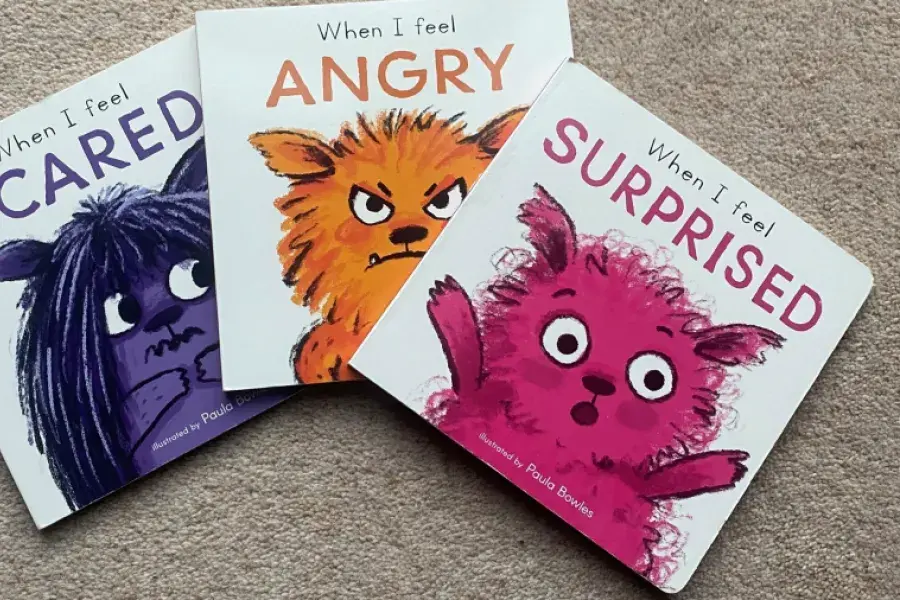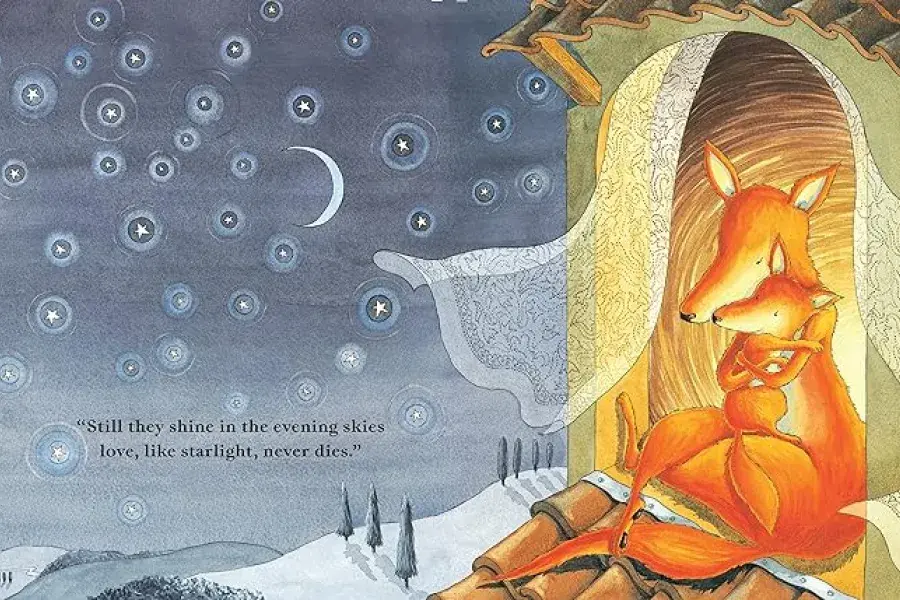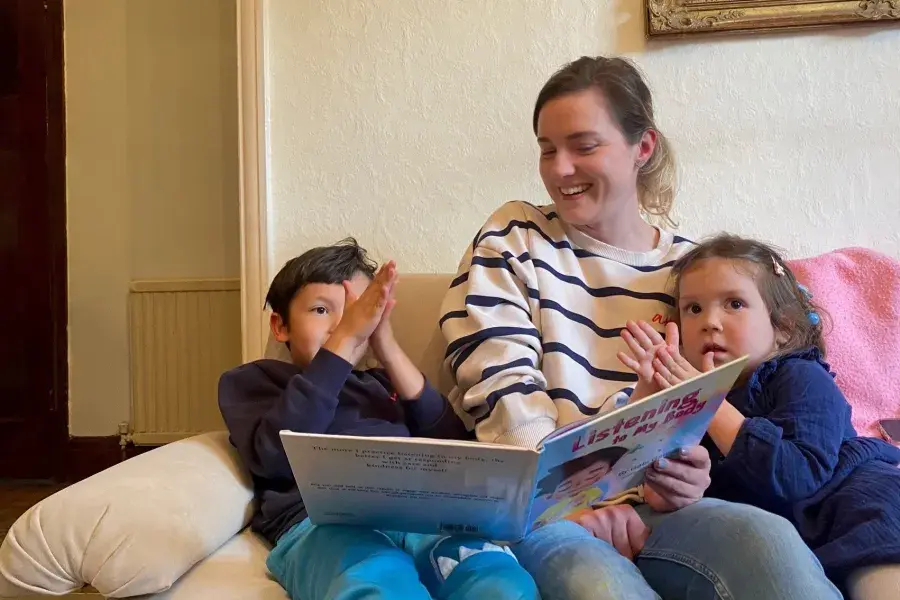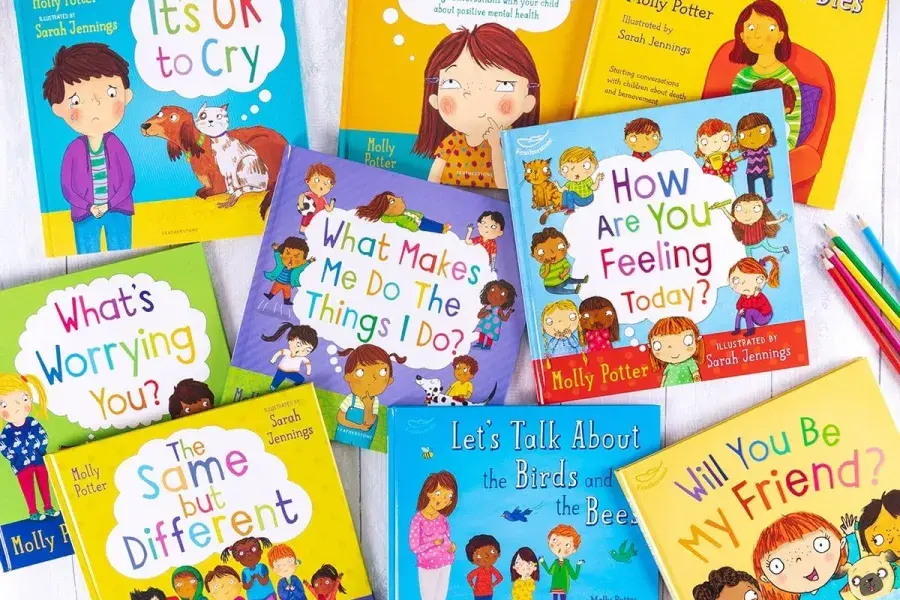Build Your Own Emotion Library: Books Focusing on Single Feelings
Welcome to this third part of our series on resources to support emotional regulation. So far, we have explained the principles of emotional regulation in part one, and looked at Molly Potter’s ‘Let’s Talk’ series of picture books as one example of resources to support with this in part two.
In today’s instalment, we explore the category of books in which each book introduces just one emotion. These allow you to select the relevant book from a ‘menu’ of different emotions based on how your child is feeling. The series we reviewed range from short and simple introductions aimed at younger children, to more in-depth stories around different emotions, complete with activities and guides for grown-ups. Let’s work our way through, starting with the simplest and moving on to those that are more complicated.
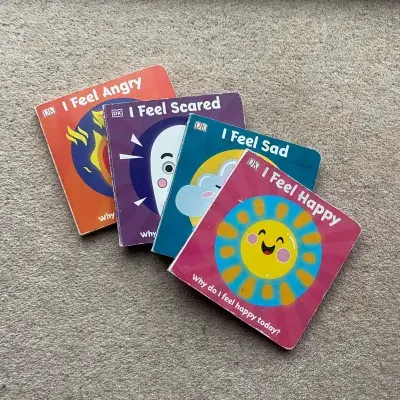
First up, we have the DK ‘First Emotions’ series. Each book presents its emotion as a non-gendered cartoon – a little raincloud in ‘I Feel Sad’, sunshine in ‘I Feel Happy’, a flame in ‘I Feel Angry’, and a little star in ‘I Feel Proud’. The easy-to-read text provides a basic introduction to help children as young as toddlers who don’t yet have words for their feelings to recognise the strong emotions they are experiencing and put a name to them. They briefly explain why children might feel each emotion (e.g. getting sad because a friend goes away or their toy breaks), how the feeling affects the body (e.g. crying) and ways they can manage that feeling.
Click here to purchase (affiliate link)
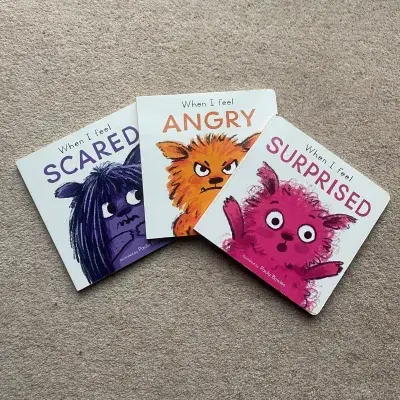
Along similar lines are the Child’s Play ‘First Feelings’ series of board books, which feature charming cartoon illustrations by Paula Bowles. There is one book for each of the six major emotions experienced by very young children – ‘When I Feel Surprised’, ‘When I Feel Angry’, ‘When I Feel Sad’, ‘When I Feel Happy’, ‘When I Feel Loved’ and ‘When I Feel Scared’. Each book takes care to feature non-gendered characters and avoid stereotypical associations of colour and emotion. Coping strategies are discussed where necessary. This series was developed in conjunction with a child psychologist, with both neurodivergent and neurotypical readers in mind.
Click here to purchase (affiliate link)
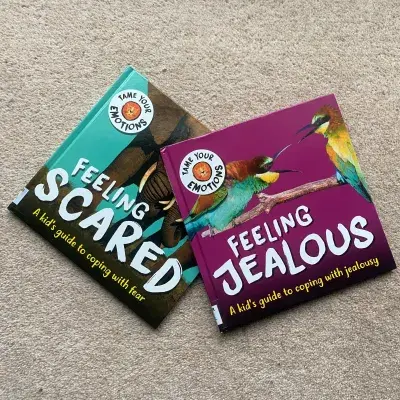
The ‘Tame Your Emotions’ series, written by Susie Williams, are aimed at a slightly older audience of five- to seven-year-olds. Titles include ‘Feeling Scared’, ‘Feeling Jealous’, ‘Feeling Sad’, ‘Feeling Worried’, ‘Feeling Angry’ and ‘Feeling Shy’. This series uses colourful animal photos to take a fun look at these feelings. Accompanying text helps children understand how they are feeling and learn ways in which to cope with them. Each book also contains notes for parents and teachers at the end, with suggestions for ideas and activities to develop a deeper understanding.
Click here to purchase (affiliate link)
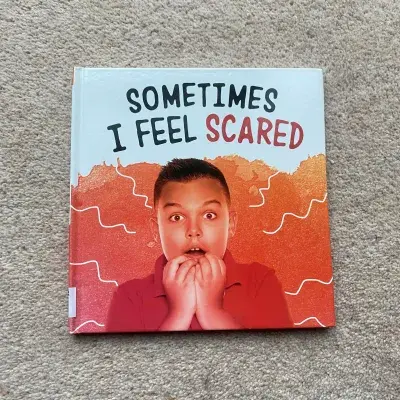
Last but not least, we have the ‘Name Your Emotions’ series by Jaclyn Jaycox and Nicole A. Mansfield. There are ten books in this series, all entitled ‘Sometimes I Feel…’. Each one goes a bit more into detail, explaining what it means to experience the feeling, how to use senses and talk about feelings, as well as suggestions to cope with the feeling. Each concludes with a mindfulness activity and other resources.
Click here to purchase (affiliate link)
Although the titles we reviewed are by no means exhaustive, all of them take slightly different approaches to tackle the similar key themes of normalising strong feelings and supporting emotional regulation, as introduced in the first part of our series. If you are looking to compile your own emotions library, our advice would be to choose a series at the right level of complexity for your child and go with the imagery they are most drawn to. Alternatively, you could mix and match books from across different series, if there is a particular emotion your child could benefit from understanding in more depth.
If you would like to purchase any of the books featured in this review, please take a moment to raise a free donation for The Neurodiversity Family Hub by using this affiliate link to purchase through Waterstones, or purchasing through our easyfundraising page and searching for your preferred online retailer.
